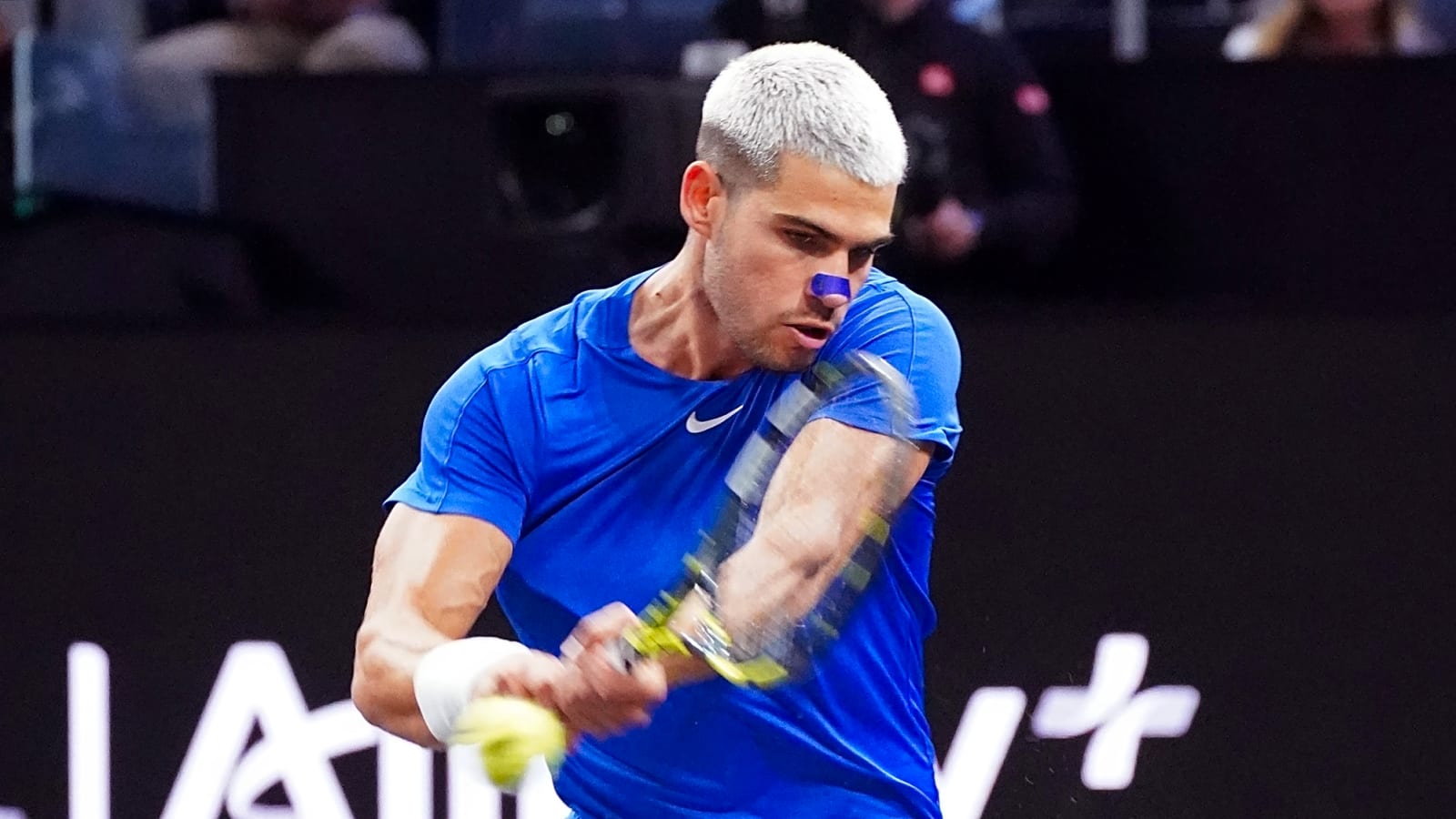
Look, we’ve heard it all before. Tennis experts—yes, even Roger Federer—love to claim that slow courts are basically Carlos Alcaraz’s personal playground. The theory goes something like this: stick the Spaniard on a sluggish surface, watch him grind opponents into dust through endless rallies, rinse and repeat. Simple math, right?
Well, not quite. Because on Tuesday at the Paris Masters, Alcaraz just served up one of the most head-scratching performances of his season, losing to Cameron Norrie 4-6, 6-3, 6-4 on—wait for it—one of the slowest courts on tour. So much for that theory.
What Went Wrong for Alcaraz?
Here’s where things get interesting (and slightly painful if you’re an Alcaraz fan). The world No. 1 walked into this match with a 17-match winning streak at ATP Masters 1000 events. Seventeen matches. That’s not just good—that’s borderline ridiculous. But against Norrie, something was seriously off.
The stats tell a brutal story: 54 unforced errors. Fifty. Four. For context, that’s the kind of number you’d expect from someone having a nightmare, not the top player in the world. Alcaraz looked out of sync from the start, struggling with his timing and footwork like he’d never seen a tennis court before. At one point, cameras caught him having what looked like a pretty intense conversation with his coach, Juan Carlos Ferrero, after dropping the second set. Yeah, it was that kind of day.
“I showed a wrong game strategy for this type of slow court,” Alcaraz admitted afterward, which is tennis-speak for “I had no idea what I was doing out there.” He went on to call it “one of the worst matches of the year in terms of feelings,” comparing it only to his loss in Miami earlier this season—though he was quick to point out that Miami was a physical issue, while this? This was just straight-up bad tennis.
The Slow Court Paradox
Now here’s where the irony really hits. Before the tournament even started, Alcaraz was singing the praises of the slower courts at Paris Masters. The venue had changed, the surface was playing differently, and the Spaniard seemed genuinely excited about it.
“The speed of the court, yeah, it’s much slower than last year, but I think it is a really good speed that we can see tennis, not only serve or it’s not only serve plus one,” he’d said. “So you can see rallies, you can see points, you can see tennis. So I think it’s great.”
He even doubled down: “Obviously I’ve said many times that I like, you know, slower courts, not that fast.”
So let me get this straight. Alcaraz specifically said he prefers slow courts. The Paris Masters delivered slow courts. And then… he lost? Make it make sense.
Why the “Slow Court Theory” Doesn’t Always Hold Up
Tennis pundits have been pushing this narrative for a while now: tournament directors are supposedly slowing down courts to favor players like Alcaraz and Jannik Sinner. The logic is that slower surfaces eliminate the element of surprise, making it nearly impossible for lower-ranked players to catch the top guys off guard with big serves or aggressive play.
Federer himself weighed in on this, suggesting that the homogenization of court speeds is tilting the playing field in favor of baseline grinders. Alexander Zverev has echoed similar sentiments. The argument isn’t completely without merit—slow courts do tend to produce longer rallies, which theoretically should favor players with elite baseline games.
But here’s the thing: tennis isn’t played in a vacuum. Court speed is just one variable among dozens. Mental state, physical condition, tactical execution, opponent’s strategy—all of these matter just as much, if not more. And on Tuesday, Alcaraz simply wasn’t there mentally or tactically.
Norrie Deserves His Moment
Let’s not forget that Cameron Norrie didn’t just show up and get lucky. The British player, ranked 31st in the world, played an absolute blinder. After dropping the first set, he clawed his way back with smart, aggressive tennis, refusing to let Alcaraz settle into a rhythm.
“Massive. So big for me,” Norrie said after the match, barely able to contain his excitement. “To get a win like this, it’s the biggest win of my career, my first win over the world No. 1 and probably the most confident player in the world right now.”
You can’t help but feel happy for the guy. Norrie’s career has been defined by consistency rather than flashy wins, so to take down the world No. 1—on a surface that’s supposed to favor him, no less—is genuinely huge.
What This Means for Alcaraz
So where does this leave the young Spaniard? Well, despite the loss, he’s still comfortably sitting at No. 1 in the rankings with 11,240 points (down from 11,340 after the Paris exit). Jannik Sinner is breathing down his neck at 10,510 points, but Alcaraz still has some breathing room.
That said, this loss is a reminder that even the best players in the world have off days. And sometimes, those off days come at the worst possible times—like when you’re playing on your supposedly preferred surface at a major tournament.
The question now is how Alcaraz responds. Does he shrug it off as a rare blip, or does it expose some deeper issues with his game? Given his track record, I’d bet on the former. But still, it’s worth watching.
The Bigger Picture
This whole saga raises an interesting question about the state of modern tennis. Are we overthinking the court speed debate? Sure, surface conditions matter, but maybe we’ve gotten a little too caught up in trying to find patterns and explanations for every result. Sometimes a player just has a bad day. Sometimes an opponent plays out of their mind. And sometimes, the supposed “advantage” of a slow court turns into a massive disadvantage because you can’t execute your game plan.
Tennis is messy, unpredictable, and wonderfully chaotic. And that’s exactly what makes it so compelling.
Final Thoughts
Carlos Alcaraz’s loss to Cameron Norrie at the Paris Masters is a perfect example of why we love (and sometimes hate) this sport. Just when you think you’ve got it all figured out—just when the experts have convinced you that slow courts equal Alcaraz dominance—the sport reminds you that nothing is guaranteed.
For Norrie, it’s a career-defining win. For Alcaraz, it’s a wake-up call. And for the rest of us? It’s a reminder to maybe take those hot takes about court speeds with a grain of salt.
More must-reads:
- MLS playoffs: How the West stacks up after Game 1
- Ja Morant suspension could be beginning of the end of guard's Grizzlies run
- The 'TDs from Josh Allen or Patrick Mahomes' quiz
Breaking News
Trending News
Customize Your Newsletter
 +
+
Get the latest news and rumors, customized to your favorite sports and teams. Emailed daily. Always free!








